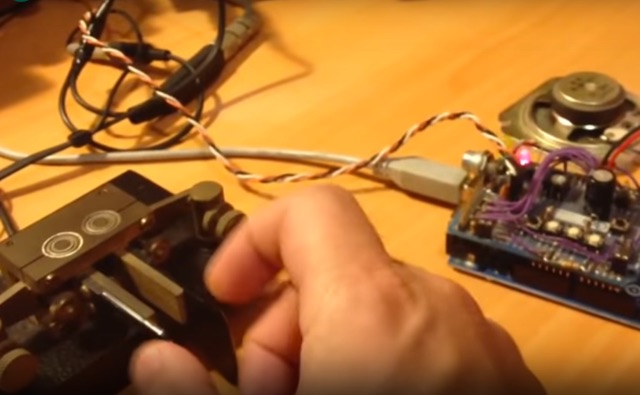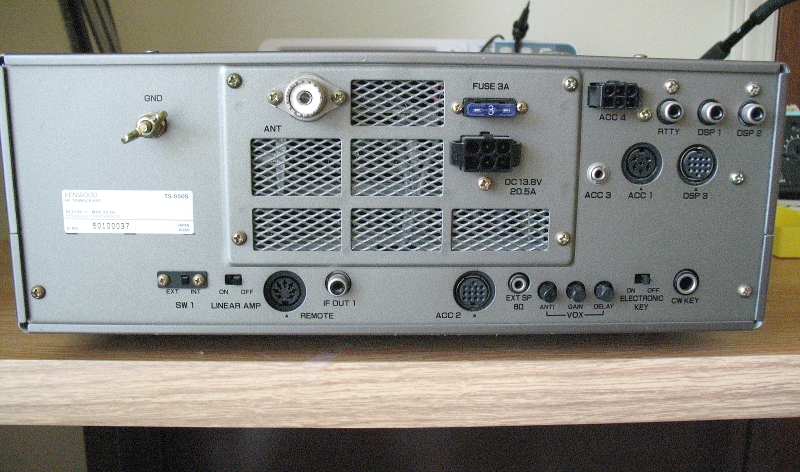The process of adding In and Out points has been greatly simplified in Lightworks, thanks to the “Mark and park” feature. Besides, this video editor provides users with a fully-featured GPU-accelerated three-way color corrector and green screen keyer. It also lets you create titles. You can edit labels, change fonts and colors. Compatible CW contest keyer Open source hardware design by DJ0MY Attention: This keyer kit requires in addition an Arduino Nano microcontroller plug-in board. The Arduino Nano must be purchased separately from one of the various Arduino dealers. Make sure to use only an Arduino Nano V3.0 (or compatible) based on a ATMEGA 328 chip.
Looking to shoot some chroma key effects? Here’s a roundup of some of the best tips, guides, and tutorials for you to resource on your next project.
It has 100 alphanumeric memories, digital RF speech compression, spectrum display, Manual and Automatic Notch, digital Twin PBT, Noise Blanker, CTCSS encode/decode, APF, two stage preamp, automatic antenna tuner and electronic keyer. A built-in automatic antenna tuner operates on the HF bands plus 6 meters. Chroma Key Photo Editor free download - Magic Photo Editor, Photo Crop Editor, DreamLight Photo Editor, and many more programs.
Cover image via Shutterstock

Chroma key effects have more or less been used in filmmaking since the 1930s. While early technologies (and even computerized blue screen effects) might not have the same effect on us now as they did on audiences at the time, the process has basically remained the same. Now, in the age of digital workflows, the chroma key process has become accessible to anyone with a digital camera, some lights, a green or blue backdrop, and an editing software like After Effects.
Dual 9K6 packet ports and built-in keyer. Twin RX: RECEIVER SECTION: Receiver system: Single- double- or triple conversion superheterodyne, depending on band and mode IF matrix: Sensitivity: FM: 0.18 uV (12 dB SINAD) SSB/CW: 0.11 uV (10 dB S/N) Selectivity: FM: 15 KHz (-6 dB), 30 KHz (-60 dB) FM-N: 6 KHz (-6 dB), 18 KHz (-60 dB).
Here’s a breakdown of the steps you’ll need to take and some tutorials to guide you through.
Choosing Your Screen
Depending on your project, you may want to use a green or blue screen for your backdrop to key out. While there are several schools of thought for the benefits and problems with each, the choice really comes down to what your subject(s) are wearing, whether you’re shooting inside or out (and at day or night), and how much spill room you will have in your setup. Here’s a great video from ReelSEO about the decision making process.
Setting Up Your Lighting
After you’ve decided on your background, you will need to work on your lighting setup. This is easily the most important part of the chroma key process — and every guide, tutorial, and quick-tip article you find will tell you the same. If you don’t do a good job lighting your screen and subjects, there’s no amount of post-production magic to make up for it. That being said, here’s a great guide (via Savage Universal Corporation) for lighting your back screens.
Balancing Your Chroma
Once your setup is complete and lit as well as possible, you’ll need to set your key and balance your chroma. You can do this by checking color bars and/or your waveform. For those looking to continue careers as professional cinematographers and DPs, you’re going to want to master the in-camera art of this setup. Here’s a good cinematography-focused breakdown by KINETEK.

Keying in After Effects
The digital post-production process for chroma keying has become pretty simple since the advent of NLE software and Adobe After Effects. There’s several slightly different (but mostly similar) routes for you to take to key out colors in AE, but ultimately your best method will be the one you’re most comfortable with. That being said, if you’re looking for a new approach, here’s a good workflow tutorial (via VideoFort) for keying in AE.
Other Resources to Check Out
Still need a little more help? Looking for a few different routes to take? You can check out our Quick Tip breakdown on how to Quickly Key in After Effects or take a look at some of the other recommended video resources below (via Film Riot, Surfaced Studio, and KriscoartProductions)!
Have any other questions about chroma keying in After Effects? Let us know in the comments!
Sign In
Register
- Access to orders in your account history
- Ability to add projects to a Favorites list
- Fast checkout with saved credit cards
- Personalized order invoices
Create Account
Following on the success of the Icom IC-746, the Icom IC-746 Pro covers 160-10 meters plus 6 and 2 meters all mode. 100 Watts of output is available on all bands - HF, 50 MHz and 144 MHz, making the IC-746 Pro a practical choice for all-around base station use. The die-cast aluminum chassis and a large cooling fan help to stabilize the PA circuit, providing 100% full duty cycle operation. The Pro version features 32 bit floating point DSP and 24-bit AD/DA converter. This combination dramatically improves receiver performance providing ultra wide dynamic range and good third order intercept point. An there are NO more expensive optional filters to buy. The digital IF filter allows your to select 51 filter bandwidths. There are three user selectable filter memories per mode. Soft and sharp filter shapes can be selected in both SSB and CW modes independently. You can also change the settings on the fly and compare! For repeater operation theres is a built-in tone encoder and decoder with 50 CTCSS and 108 DTCS based tones. There is even a built-in Baudot RTTY demodulator.
It has 100 alphanumeric memories, digital RF speech compression, spectrum display, Manual and Automatic Notch, digital Twin PBT, Noise Blanker, CTCSS encode/decode, APF, two stage preamp, automatic antenna tuner and electronic keyer. A built-in automatic antenna tuner operates on the HF bands plus 6 meters. The 746 Pro requires 12 VDC at 23 Amps. The IC-746 Pro came with HM-36 hand mic, spare fuses, OPC-025 DC power cable and key plug. 11.3 x 4.8 x 12.5 inches. 20 lbs.
See the May 2002 issue of QST for a great review of this radio.
Photo Keyring Blanks
AccessoriesPhoto Keyrings Bulk
Photo Keller
Order #| Photo | Item | Description | List Price | Your Price | Order |
|---|---|---|---|---|---|
| AH-4 | Automatic antenna tuner 120 watts, 80 to 6 meters. Click here for further info. | Not currently stocked | |||
| CR-338 | High Stability Crystal Unit (to ±0.5 ppm). | Discontinued | |||
| CT-17 | CI-V Level Converter for PC operation. Click here for more information. | Discontinued | |||
| HM-36 | Hand mic [as supplied]. | Discontinued | |||
| HM-219 | Hand mic [replaces HM-36]. | Not in stock | |||
| OPC-025D | DC Power cord 9 foot (3m). [Same as supplied]. | Discontinued | |||
| PS-125 | Power Supply 13.8 VDC 25 Amps. | Discontinued | |||
| SP-20 | External speaker with built-in audio filters. Includes audio cable. | Discontinued | |||
| SP-21 | External Speaker (style and size matches 746Pro). | Discontinued | |||
| SP-23 | External Speaker with dual inputs, audio filtration, speaker switch and headphone jack. Click here for details. | Not in stock | |||
| SM- 6 | Desk microphone with flexible neck. Click here for further info. | Discontinued | |||
| SM-20 | Desk Mic with Up-Down Buttons. Click here for further info. | Discontinued | |||
| UT-102 | Voice Synthesizer announces frequency and mode. INFO | Discontinued | |||
| MINI MANUAL | Nifty spiral bound mini-manual contains 19 laminated pages [4.5 x 8 inch]. | Discontinued | |||
